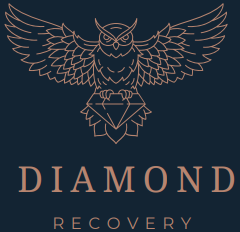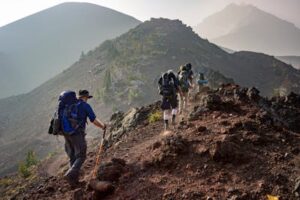As the sun rises over Ensign Peak, a recovering addict stands quietly, looking down, out over the Salt Lake Valley. If you have ever hiked to the top yourself, you know the feeling: out of breath, clear mind, and the empowerment of a challenge overcome. For the person struggling with substance abuse, addiction recovery can feel like the uphill climb they just completed, difficult, but worth every step. This is the power of adventure-based recovery, real progress made one challenge at a time, in nature and deep within the soul.
Adventure therapy is not a new concept. Originating in the 1960s, it has become a transformative tool to aid in addiction recovery. By using adventure experiences, therapists can help individuals with personal development through hands-on activities, harnessing the healing power of nature. From hiking the trails of Antelope Island to rock climbing in Big Cottonwood Canyon, Utah’s diverse landscape offers more than beautiful scenery; it offers a path to sobriety.
The purpose of this article is to educate you on what adventure therapy is, how it works, and why more residential treatment centers are incorporating outdoor activities to help people rebuild their lives, one adventure at a time. By understanding the benefits of outdoor therapy and knowing the right questions to ask, you can find a treatment center that uses the healing power of nature with professional guidance. Let’s start by taking a trip back in time, when adventure therapy became a “thing.”
What is Adventure Therapy?
The practice of adventure therapy is a unique and hands-on treatment that incorporates an experience, usually in a natural setting, guided by a mental health professional who uses the activity or experience for transformational results. Adventure therapy is a fun and powerful way for individuals, families, or groups to beat addiction and improve their physical, psychological, emotional, social, and spiritual well-being.
Adventure therapy took root in the U.S. during the 1960s, modeled after the Outward Bound movement that began in the United Kingdom during the early 1940s. Shortly after making its way to the States, BYU began a wilderness survival program that focused on the rehabilitation of troubled youth through the combination of outdoor activities and therapeutic goals. By the time the 80s rolled around, several professional organizations had been established to set the standards for wilderness and adventure therapy, and research was available to show the effectiveness of adventure therapy on mental health and addiction.
Utah remains a central hub for adventure therapy today with its diverse landscapes that are perfect for hiking, biking, climbing, kayaking, or just about any other outdoor activity you can think of. While these activities sound like fun and games, they are used to promote personal growth and provide the tools needed to live a healthy and meaningful life. Next, let’s examine the three major types of adventure therapy used today.
3 Types of Adventure Therapy
Adventure therapy is a diverse and ever-evolving practice. Today, there are many different variations of adventure-type therapies available, but these three are most commonly used and discussed in literature about addiction treatment.
Remote Wilderness Therapy: This type of program is designed for small groups, typically used for young adults and teens, and is designed similarly to the Outward Bound program, which can last from several days to several weeks. Participants are taken to remote areas where they are fully immersed in outdoor living and taught new skills. These programs teach invaluable lessons on self-reliance, allowing time in nature for reflection, and promote spiritual well-being.
Long-Term Camping: Unlike remote wilderness therapy, long-term residential camping may last up to one full year, where participants live full-time in a structured camp setting. Again, these programs are common for teens and young adults but can also be found for adults who are in addiction recovery and want to enhance their personal development. Here, traditional camping elements are combined with the structure of rehab and evidence-based therapeutic interventions.
Adventure-Based Therapy: This type of adventure therapy is a structured activity, designed to be part of a larger residential or outpatient addiction treatment program. It is not uncommon for a residential rehabilitation center in Logan, due to the proximity of many natural landscapes and Utah’s pioneering roots in the field, to offer adventure-based therapy. Adventure-based therapy can be hosted at the facility or somewhere near the facility. These programs are incorporated not just for fun, but they also encourage team-building, skill development, and emotional regulation. The following is a list of beneficial adventure therapies to look for when searching for an addiction treatment facility.
- Hiking
- Rock climbing
- Kayaking
- Rafting
- Challenge Courses
- Equine Therapy
- Swimming
- Skiing
- Snowshoeing
Adventure therapy takes on many different forms, from multi-week wilderness camping to adventure-based sessions that are integrated into the daily schedule of residential rehab programs. Each therapy helps to support people who are in different stages of recovery, providing a unique combination of challenges, self-reflection, and personal growth. But beyond the activity lies a deeper, more meaningful impact, one that reaches the heart of healing addictions.
Benefits of Adventure Therapy for Addiction Recovery
The hands-on approach of adventure-based therapy has many benefits to offer the person in recovery, from improving physical health to healing emotional and psychological wounds. Let’s take a look.
Physical Benefits: It’s no secret that physical activity will promote physical health, but did you know that it also helps to reduce stress? Being in nature is a natural anxiety reducer, helping to counter withdrawal symptoms. Engaging in activities like hiking, biking, or rock climbing not only lays a foundation for a healthy recovery, but it also provides a stress relief activity for use in the future.
Emotional and Psychological Benefits: With the guidance of professionally trained therapists, adventure therapy can lead to numerous positive changes in a person’s emotional and psychological well-being. With guidance, individuals can use the experience of scaling a rock wall to build their self-confidence, improve their emotional regulation, and enhance their self-esteem. A person who believes in their ability to accomplish challenging activities can use that self-efficacy to resist cravings, make healthy choices, and stay sober.
Social/Relational Benefits: Adventure-based activities are most often designed as group activities. This helps people develop better communication skills, gain trust, and build healthy peer support groups. All of these skills, along with conflict resolution skills, can help rebuild relationships that may have been damaged because of the addiction and support healthy social relationships for the future.
Spiritual and Holistic Benefits: Natural settings can play a powerful role in spiritual and holistic healing by helping people reconnect with themselves. Nature helps us recognize something greater than ourselves and helps us find our sense of purpose.
With the added benefits of adventure therapy, studies show that when combined with a professional treatment program, it can be very helpful in treating addiction. This should lead those seeking substance abuse treatment to seek a facility that offers adventure-based therapy. So, how do you find out if a program you’re looking at offers any of these activities?
Questions to Ask When Looking for a Rehab with Adventure Therapy
When looking for a rehab center that offers adventure-based therapy, it’s important not only to check out their website for any related information, but you should also ask specific questions to know how each facility you’re considering tailors to the needs of each individual. Here are a few key questions to ask when looking for treatment that includes adventure-based therapy.
- Do you offer any type of adventure therapy as part of your residential addiction programs?
- What specific outdoor activities do you incorporate into your treatment programs?
- How often do such activities take place?
- Are adventure-based activities guided by certified therapists?
- Do you tailor adventure therapies to the individual needs or abilities of your clients?
- How is self-reflection incorporated into these activities so that the experiences help me meet my recovery goals?
- Are these programs accredited by any organizations?
- Are there any nearby resources that make your facility ideal for adventure therapy?
Healing Happens Outside the Comfort Zone
Adventure therapy is proof that healing doesn’t always happen in the safety of four walls. It can begin at a trailhead, on the river’s edge, or at the top of a mountain. With Utah’s rugged landscapes and roots in adventure-based therapy, addiction treatment facilities here offer a unique and transformative path to recovery. The choice to go beyond our comfort zone and do something difficult helps to mirror the work required to overcome addiction. But the moments of breakthrough, clarity, and feeling of accomplishment mirror the transformation that comes with sobriety. By impacting physical health, enhancing emotional resilience, creating healthy social bonds, and reconnecting with spirit, these activities give individuals the power to overcome addiction and achieve lasting sobriety. So if you or a loved one is considering addiction treatment, ask these important questions and find a rehab center that takes recovery to the outdoors, where true healing begins.
Infographic


















